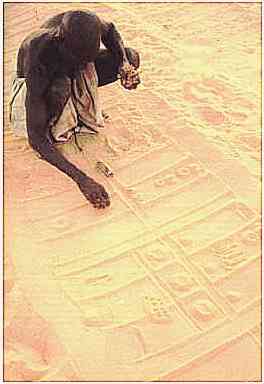
THE CULT OF SAINTS IN NORTHWESTERN TUNISIA
An analysis of contemporary pilgrimage structures
Wim van Binsbergen

 |
THE CULT OF SAINTS IN NORTHWESTERN TUNISIA An analysis of contemporary pilgrimage structures Wim van Binsbergen |
 |
In this chapter I shall present a
description and analysis of the cult of local saints, as major
aspect of contemporary popular religion in the highlands of
Khumiriya, north-western Tunisia. This paper is therefore a
contribution to the ethnography of religious behaviour in general
and that of rural North Africa in particular. As is the case in
much of religious anthropology, studies of popular Islam have
tended to concentrate on systems of belief and symbolism, with
excursions into the relation between religion and the wider
social, economic and political context in which that religion
occurs. The behavioural aspect of religion has been somewhat
neglected, and as a result for some of the most pertinent
questions of contextual religious analysis we have had to content
ourselves with tentative answers largely founded on intuition and
persuasion; the necessary empirical data have often been lacking.
A major problem in this connexion is that an empirical,
quantitative description of religious behaviour — such as I
shall offer towards the end of this chapter — remains
meaningless without an adequate discussion of the symbolic and
social-organizational aspects of such behaviour.
Having elsewhere dealt with the historical aspects of saintly cults and the interplay between popular and formal Islam in the Khumiri region, I shall here largely limit myself to the contemporary situation concerning pious visits (zy„ra) to shrines associated with named local saints — touching on local history only in so far this helps to explain the nature of territorial segmentation today, and refraining from a discussion of such significant aspects of Khumiri religion as: the veneration of trees and sources; veneration of saints through other rituals than pious visits; the ecstatic cults that are loosely organized in religious brotherhoods and that, although implying saints, form a popular-religious complex somewhat distinct from zyara; the symbolic deep structure of such key concepts as sainthood and baraka; and finally the formal Islam of the Qur’an, the mosque, the pilgrimage to Mecca. Even so the ethnographic argument will be too lengthy to wallow for a more than cursory discussion of the many wider theoretical implications of the Khumiri data.
Part I:
click
here in order to access Part I
1. INTRODUCTION
2. REGIONAL AND HISTORICAL BACKGROUND
3. SEGMENTATION IN KHUMIRIYA TODAY
4. SHRINES IN KHUMIRIYA
5. SAINTS AND THE LIVING
Part II:
click
here in order to access Part II
6. SEGMENTATION AND TYPES OF ZYARA
7. LOCAL ZYARA IN THE
VALLEY OF SIDI MHAMMAD
8. ORIGINAL AND PERSONAL ZYARA IN
THE VILLAGE OF SIDI MHAMMAD
9. CONCLUSION
REFERENCES
| page last modified: 14-02-01 09:46:51 |  |
|||
 |